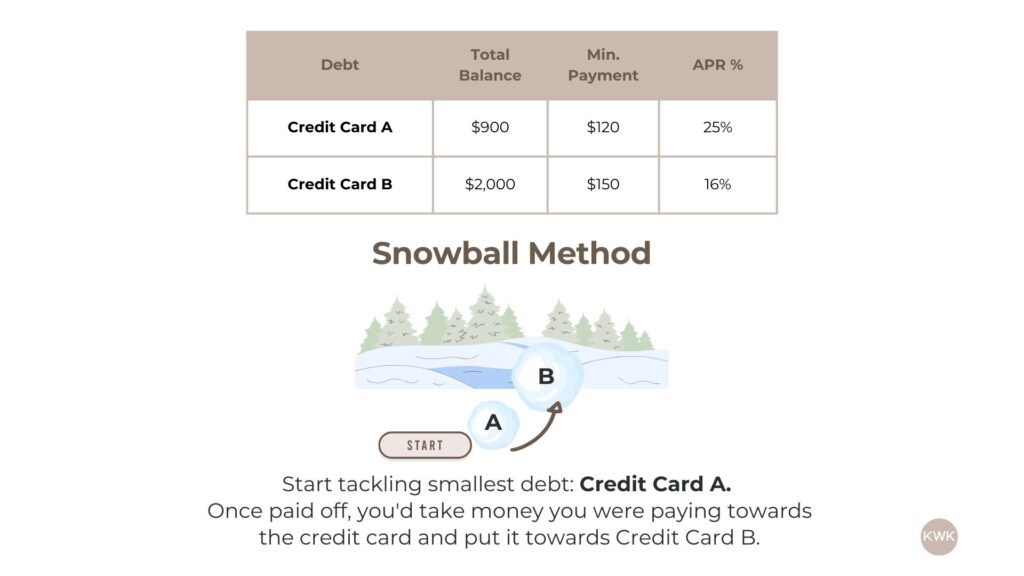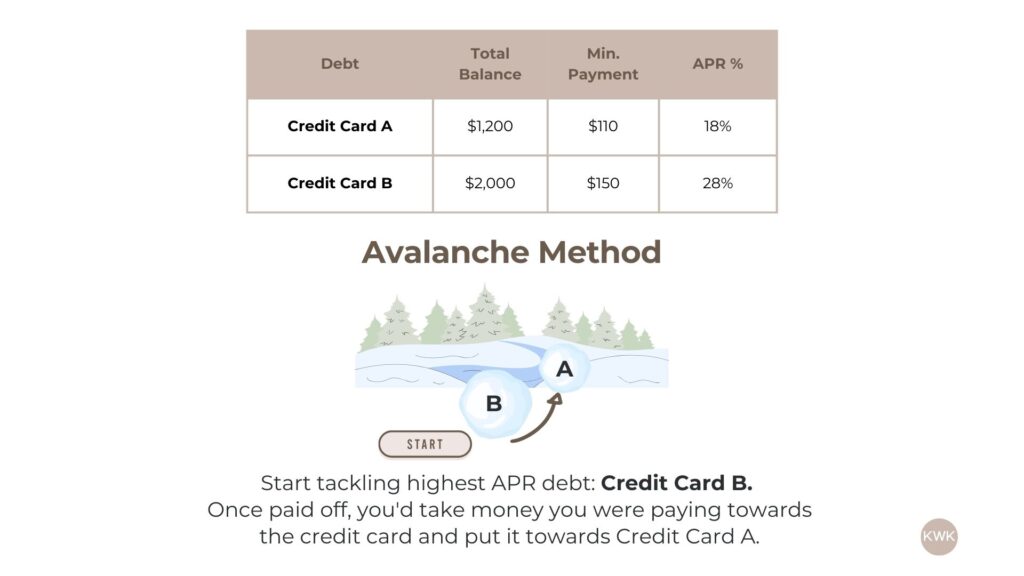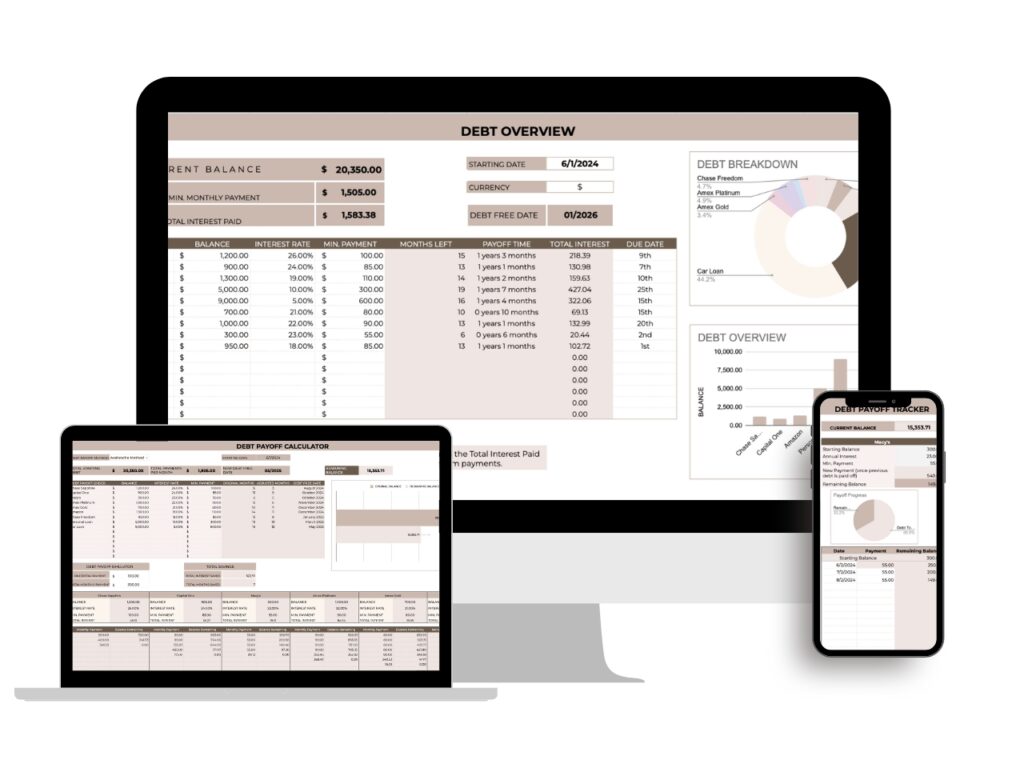Debt can feel like a huge weight on your shoulders, making everyday life more stressful than it needs to be. We’ve all been there—juggling bills, worrying about the future, and wondering if there’s a way out. The good news is, there is hope. Managing and tackling debt doesn’t have to be overwhelming. It starts with understanding your situation and taking small, manageable steps towards financial freedom.
It’s important to remember that not all debt is bad. For many of us, taking on debt is necessary for major life investments like buying a home or getting an education. When managed wisely, debt can be a strategic tool that helps you build wealth and invest in your future.
However, debt can become a major burden, especially when it comes to high-interest debts like credit card balances. They can quickly spiral out of control, making it difficult to keep up with payments and causing serious financial strain. But don’t worry, with the right strategies, you can take control of your debt and turn things around.
In this blog, I’ll share some practical tips on how to effectively tackle debt. We’ll cover strategies to manage and reduce your debt, ways to change your spending habits, and tips to stay motivated throughout the journey.
Understanding Debt and Interest Rates
Understanding how debt works and the impact of high-interest rates is the first step to taking control.
Let’s first break it down: There are two key parts:
- Principal: This is the original amount of money you borrowed.
- Interest: This is the fee you pay for borrowing money, usually expressed as a yearly percentage rate (APR).
For example, let’s say you buy something on sale for $750 with your credit card. If you don’t pay it off in full by the due date and instead make the minimum payment of, lets say, $25 a month, the interest will start adding up on that balance. Credit card APRs can be high, typically ranging from 15.99% to 30%. Generally, any APR above 7-8% is considered high interest.
So let’s say this card has a 24% APR. By only making the minimum $25 payment per month, it would take you approximately 47 months (almost 4 years) to pay off that $750 purchase. With the high interest, you would end up paying a total of around $1,156.83. Suddenly, that $750 “sale” doesn’t seem so cheap anymore, does it? 😰
Now that we understand how debt works and the impact of high interest rates, don’t feel discouraged! You can take control and develop a plan to pay it off.
Two Effective Methods for Tackling Debt: The Snowball and Avalanche Methods
-
The Snowball Method:
Many people find the snowball method to be a particularly motivating approach to debt payoff. This strategy prioritizes paying off the smallest debt first, regardless of interest rate.
Here’s a step-by-step guide to using the snowball method:
- List all your debts: Include the outstanding balance and minimum payment for each.
- Order your debts: Rank them from smallest balance to largest balance.
- Make minimum payments on all your debts, except the smallest one.
- Put any extra money you have towards paying off the smallest debt.
- Once you pay off a debt, take the money you were paying on it and add it to the minimum payment of your next smallest debt. This “snowballs” your payments towards each debt, helping you pay them off faster.
- Repeat this process until they are paid off!
Example:

-
The Avalanche Method:
The avalanche method focuses on prioritizing debt with the highest interest rates. This strategy saves you money in the long run because you’re paying off the debt that accumulates the most interest charges the fastest.
Here’s a step-by-step guide to using the avalanche method:
- List all your debts: Include the outstanding balance and interest rate for each.
- Order your debts: Rank them from highest interest rate to lowest.
- Make minimum payments on all your debts, except the one with the highest interest rate.
- Throw any extra money you have towards the debt with the highest interest rate.
- Once the highest interest debt is paid in full, take the money you were paying on it and add it to the minimum payment of your next highest interest rate debt.
- Repeat this process until they are paid off!
Example:

Choosing Your Payoff Method:
It’s time to decide which one is right for you! Here are some factors to consider when making your choice:
- Personality: Are you motivated by seeing quick wins (snowball) or focused on saving the most money in the long run (avalanche)?
- Financial Overview: Consider the size and interest rates of your debts. If you have many small ones, snowball might be easier to manage. Conversely, avalanche can save you more money if you have a few larger debts with high-interest rates.
- Sticking with the Plan: Both methods require commitment, but in different ways. Avalanche might take longer to see significant progress, so consider your ability to stay motivated over the long haul.
Ultimately, the best method is the one you’re most likely to stick with! Both methods are effective, so don’t spend too much time deciding which to pick. Focus on choosing the approach that best suits your financial situation and personality, and commit to seeing it through.
Additional Tips:
By following these additional tips and choosing the right payoff method, you can effectively manage your debt and achieve your financial goals!
- Create a Budget: Track your income and expenses to identify areas where you can cut back and free up more money to pay off debt.
- Increase Your Income: Look for ways to boost your income, such as a side hustle, to accelerate your progress.
- Prioritize Existing Obligations: While focusing on your repayment plan, resist taking on new financial commitments that can slow your progress.
- Automate Payments: Set up automatic payments to ensure you never miss a minimum payment.
- Celebrate Milestones: Reward yourself for reaching milestones to stay motivated on your journey!
By combining these payoff strategies with the additional tips we covered, becoming debt-free is absolutely possible! Remember, the most important step is to take action and choose a method that aligns with your goals. Stay committed on this journey, and celebrate your progress along the way – You’ve got this!
Have questions? Leave a comment below
Ready to create a personalized debt payoff plan in just minutes?
Check out this amazing tool featuring built-in calculations to help you compare the snowball and avalanche methods. See which one works best for you! Plus, it’s designed to save you tons of time. ⏰


